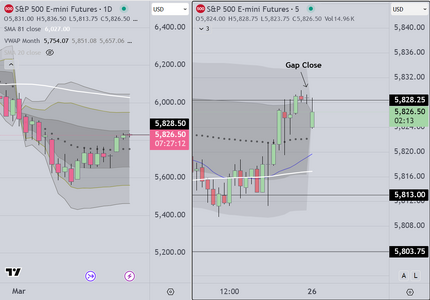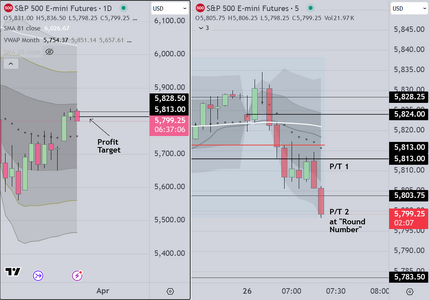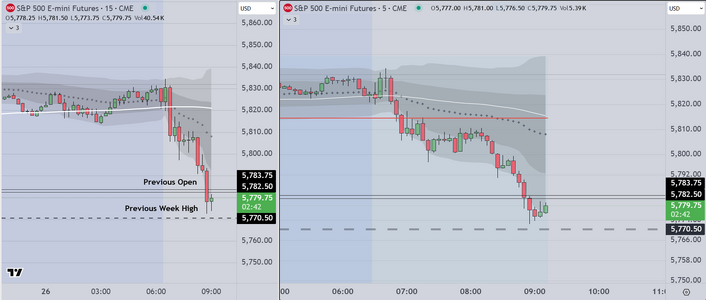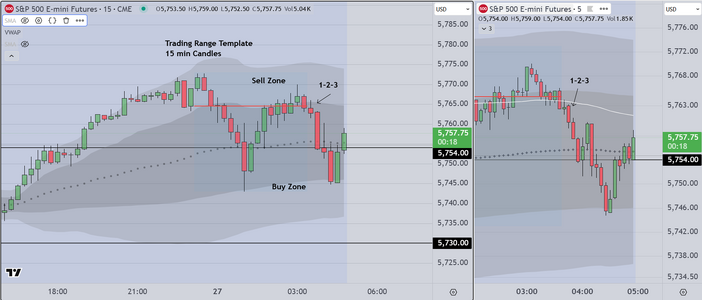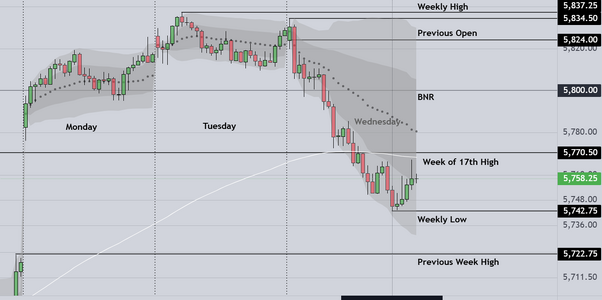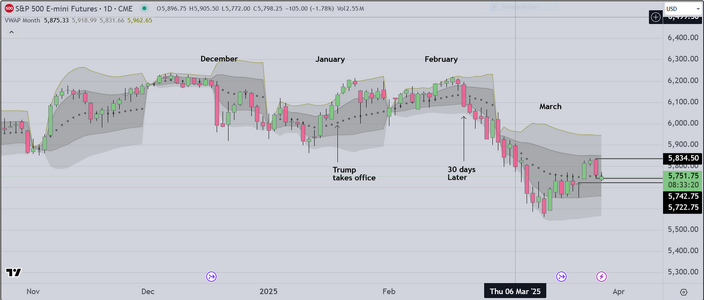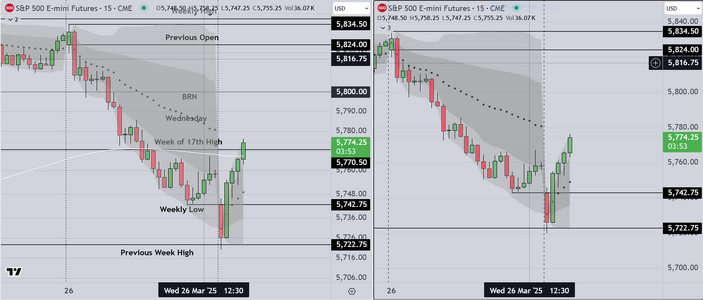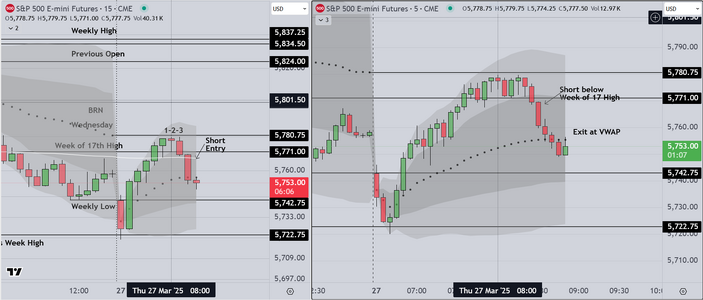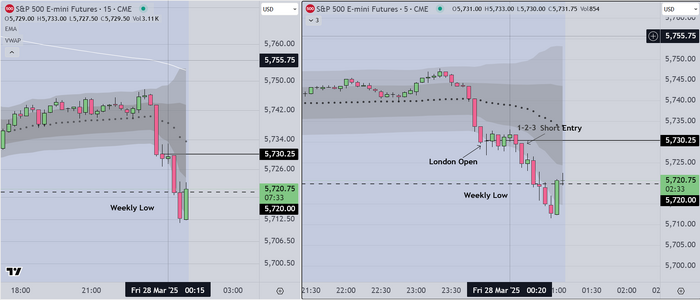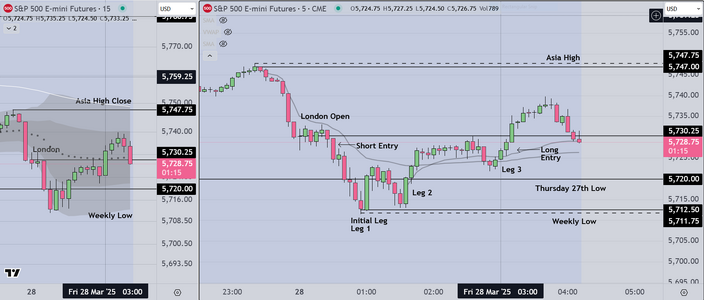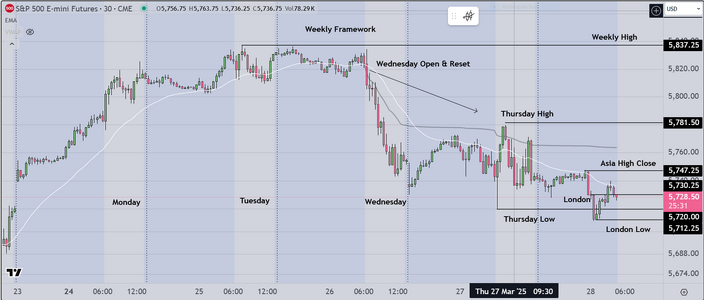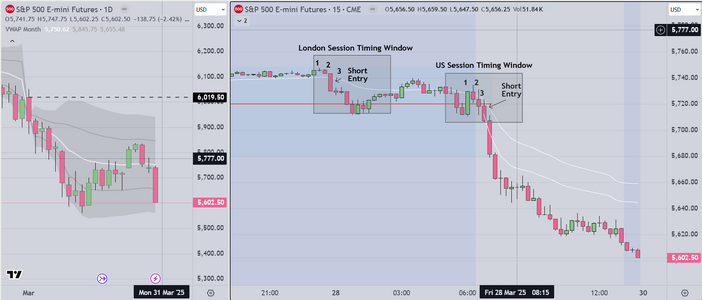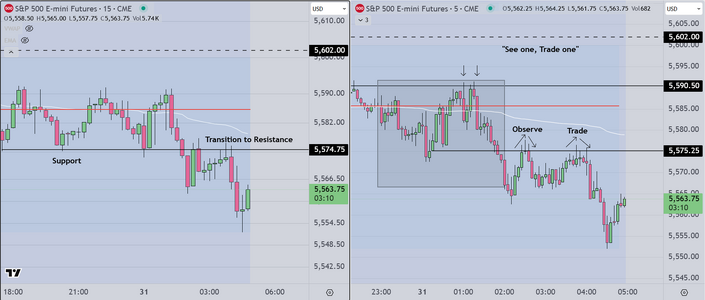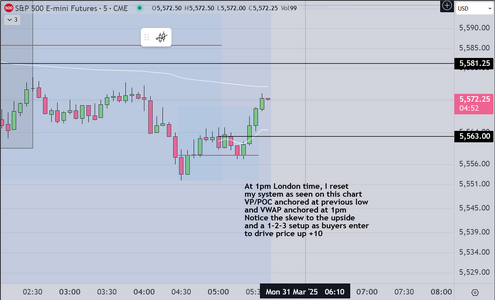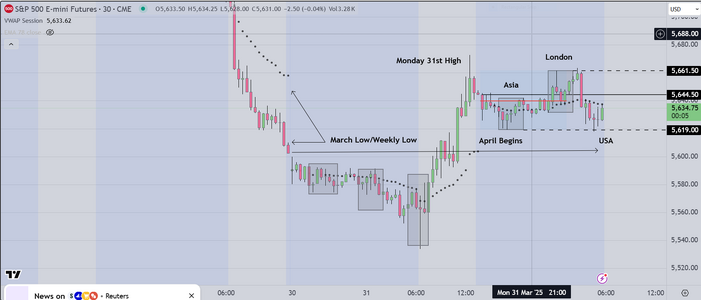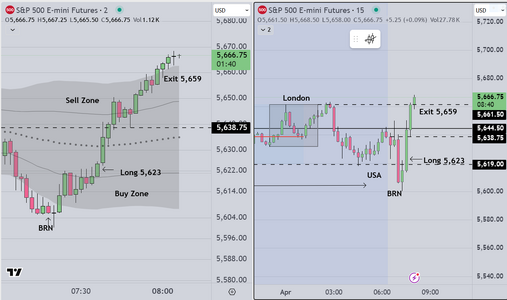Tw0 (2) trades on the 15 min chart today.
Easy day
Skew starts positive (early) and this suggests the possibility
of a reversal after the initial move to fill the gap
When the gap is small, the trade is called a "layup" and professionals
will take it as a "scalp", then they wait for market technicals to signal
a reversal. The reversal can be seen in the price action AND most professionals
maintain a shortlist of high volume stocks (NVDA/APPL/TSLA for example) and
as they turn, we look for setup signals to match.
Although I met my quota for the day, I did not keep a runner in place
and that was a mistake.
Good Luck
Easy day
Skew starts positive (early) and this suggests the possibility
of a reversal after the initial move to fill the gap
When the gap is small, the trade is called a "layup" and professionals
will take it as a "scalp", then they wait for market technicals to signal
a reversal. The reversal can be seen in the price action AND most professionals
maintain a shortlist of high volume stocks (NVDA/APPL/TSLA for example) and
as they turn, we look for setup signals to match.
Although I met my quota for the day, I did not keep a runner in place
and that was a mistake.
Good Luck
Attachments
Last edited:


